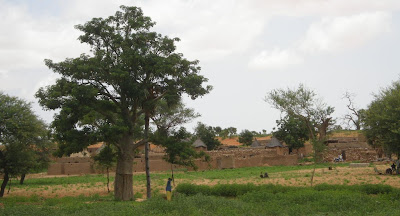
The end of the trip. I was getting sick the moment I shot these last pictures. I have no idea how they cooked the chicken I ate at night, I felt dehidratated and tired. That was the only village where they could cook something and it would make my stomach sicker for sure. They don´t sell water in the desert and my bottle was almost finished. I still had to climb to get out of the desert by car and rest for two days. Such a nightmare... but I am safe back home now :-)


I woke up that morning with the rythmic sound of women mashing millet in the wooden buckets.













































